Invented by Sanjay K Rao, Sunil K Rao, Rekha K Rao, Individual
One of the key drivers of this market is the increasing demand for smart and connected devices. With the advent of the Internet of Things (IoT), there has been a surge in the number of devices that can be connected to the internet and communicate with each other. This has led to the development of systems that can wirelessly connect and control multiple devices simultaneously. These systems enable seamless communication and data sharing, leading to improved productivity and efficiency.
In the healthcare industry, wireless devices and intelligent glass with real-time connection have transformed patient care. Doctors and nurses can now monitor patients remotely, track vital signs, and receive real-time alerts in case of emergencies. This has not only improved patient outcomes but also reduced the burden on healthcare professionals. Additionally, intelligent glass with real-time connection has been used in surgical procedures, allowing surgeons to access vital information without taking their eyes off the patient.
The manufacturing industry has also benefited greatly from this technology. Wireless devices and intelligent glass with real-time connection enable real-time monitoring of production processes, inventory management, and quality control. This has resulted in streamlined operations, reduced downtime, and improved overall efficiency. Manufacturers can now track and analyze data in real-time, allowing them to make informed decisions and optimize their processes.
Transportation is another sector that has embraced this technology. Intelligent glass with real-time connection has been used in vehicles to provide drivers with real-time information, such as navigation, traffic updates, and vehicle diagnostics. This not only enhances the driving experience but also improves safety on the roads. Additionally, wireless devices have been integrated into public transportation systems, allowing passengers to access real-time information about routes, schedules, and delays.
Smart homes have also seen a surge in the adoption of wireless devices and intelligent glass with real-time connection. Home automation systems enable homeowners to control various aspects of their homes, such as lighting, temperature, security, and entertainment, through a single interface. These systems can be accessed remotely, allowing homeowners to monitor and control their homes from anywhere in the world. This technology has not only made homes more convenient but also energy-efficient, leading to cost savings and reduced environmental impact.
In conclusion, the market for system of wireless devices and intelligent glass with real-time connection is experiencing rapid growth and innovation. The ability to connect multiple devices wirelessly and have real-time access to data has transformed various industries, including healthcare, manufacturing, transportation, and smart homes. This technology has improved efficiency, productivity, and safety, leading to better outcomes and enhanced user experiences. As the demand for smart and connected devices continues to rise, we can expect further advancements and applications in this market.
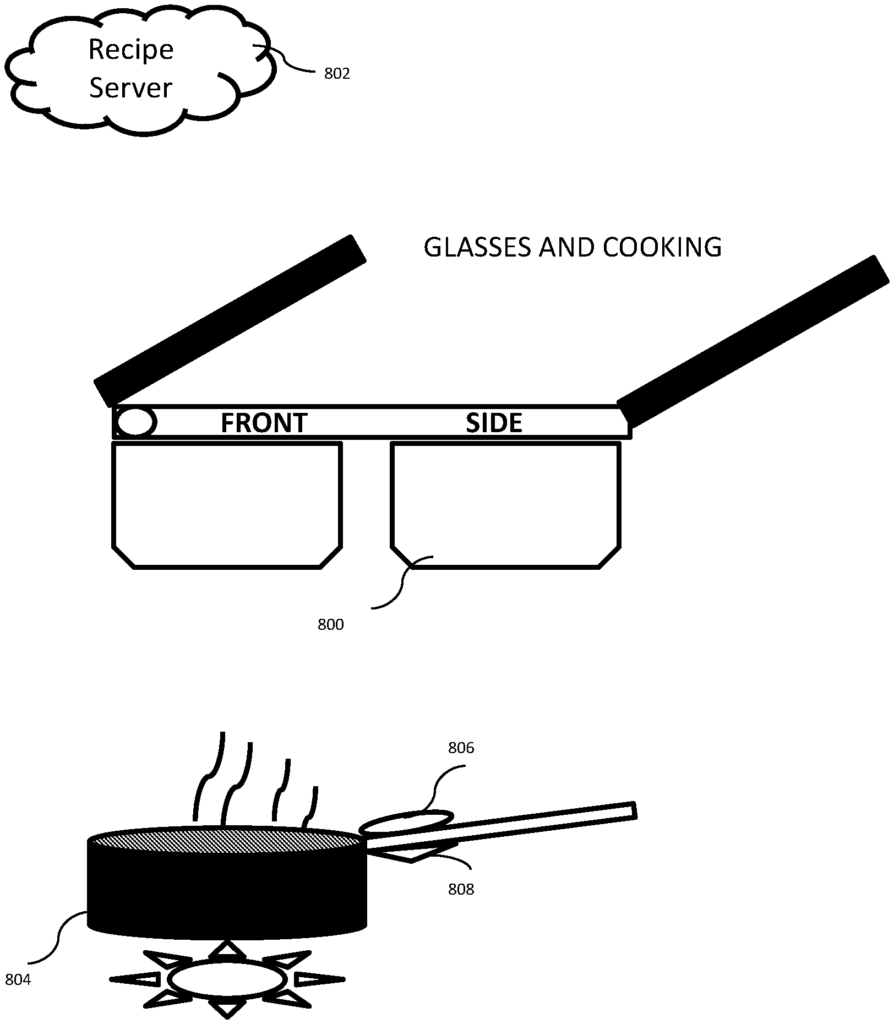
The Individual invention works as follows
A mobile communications system based on images and videos that can be acquired, displayed, and processed using multiple mobile devices, smartphones and tablet computers. The system allows for a variety priority of systems to interact between devices, including network servers and wearable devices. Priority systems include wireless data communication and telephone between devices.
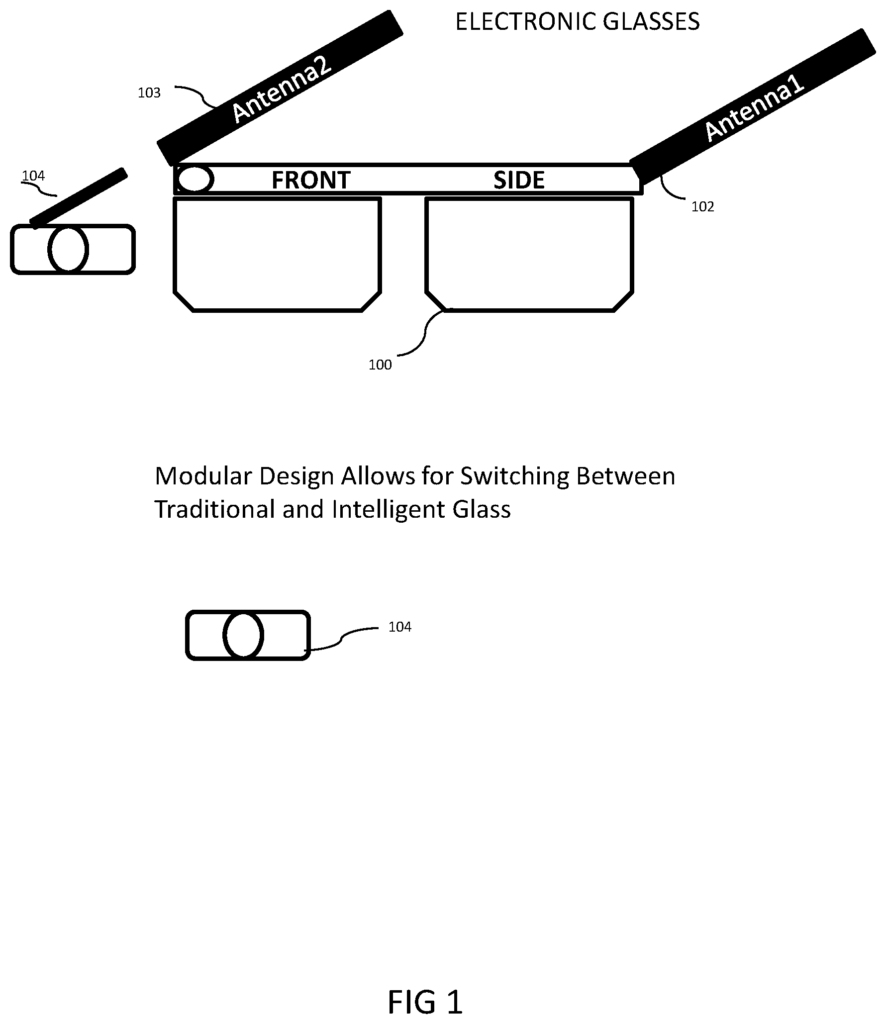
Background for System of wireless devices and intelligent glass with real-time connection
Processing and compute capabilities, as well as storage and communication, are commonly found in traditional endpoints, such mobile devices or cloud-based networks. It is important that distributed computing power be available on a variety of devices, including network-enabled devices. New wireless device form-factors that are wearable, small and disposable, or integrated into larger devices, may enable computing, storage and communication capabilities to be distributed through a multitude of local devices.
The disclosure generally relates smart glasses, watches, bands, and other wearables that can be used alone or in combination with a mobile phone, wireless network or remote cloud server infrastructure.
This disclosure relates in general to a variety of multimodal, multifunction mobile devices including intelligent electronic glass. The present disclosure enables mobile devices, advanced smartphone, cellular phones, tablet computers and intelligent electronic glasses to acquire, display and interact with digital media content. The mobile device/intelligent electronics glasses/headset can be used to continuously and always-on acquire audio, image and video content, as well as location and other information using multiple input methods, including images sensors. The mobile device/intelligent glasses/headset can also display content across a range of surfaces and displays.
It is an aspect to the present disclosure that image-based communication can be enabled between mobile devices/intelligent glasses/headsets, distributed image sensor, stationary devices, servers, by wired or Wireless communication means.
The mobile device/intelligent glasses/headset can be used to control devices or servers, including gesture control and eye control. Other user interface activities include retinal control and facial control. Image sensors can be integrated in various mobile devices. Image sensors can also be attached to traditional, non-electronic gadgets. For example, a camera could be built into a pair sunglasses. A display could be attached to the area near the lens. Wireless transmit and receive radios built into the devices can be used to communicate between mobile devices/intelligent glasses/headsets and other devices, including Internet or network servers.
It’s an embodiment of the system that intelligent electronic glasses or headphones are configured to be worn by the body. These intelligent electronic headsets or glasses may have the same functions as a smartphone, or other stationary electronic devices. The intelligent electronic glass may use the processing power of a smartphone, a local server, or a network server to continuously receive, transmit, or acquire digital content.
The intelligent electronic glasses and headsets may include a complete set of components or a subset, including: processor, multicore processor, graphics processor, display, high definition display, LCD, LED or see through LED display, see through LCD/LED display or other displays, dual displays for each of the eyes, keyboard, projected keyboard, on screen keyboard, programmable buttons, microphone, noise isolation or cancellation, speakerphone, in-ear Components can be integrated in ASICs, integrated houses, separate components, or swappable.
The mobile device can include a complete set of components or a subset, including: processor, multicore processor, graphics processor, display, high definition display, LCD, LED or see through LED display, see through LCD/LED display, or other displays; dual screens for each eye, keyboard, projected keyboard, on screen keyboard, programmable keys, microphone, noise isolation or cancellation, speakerphone, in-ear speakers, digital still camera, digital video camera, front facing camera, back The components may be contained in integrated ASICs; integrated housings; separate components or swappable parts.
The components of a watch can include a complete set or merely a subset, including: processor, multicore processor, graphics processor, display, high definition display, LCD, LED or see through LED display, see through LCD/LED display, or other displays, dual displays, keyboard, projected keyboard, on screen keyboard, programmable keys, microphone, noise isolation, noise cancellation, speakerphone, in-ear speakers, digital still camera, digital video camera, front facing camera The components may be contained in integrated ASICs; integrated housings; separate components or swappable parts. The watch can function as a?nth? or second screen. The watch can be used as a second screen or?n-th?
The cellular phone, glasses, watches, and other devices can communicate with one another and with local and network servers.
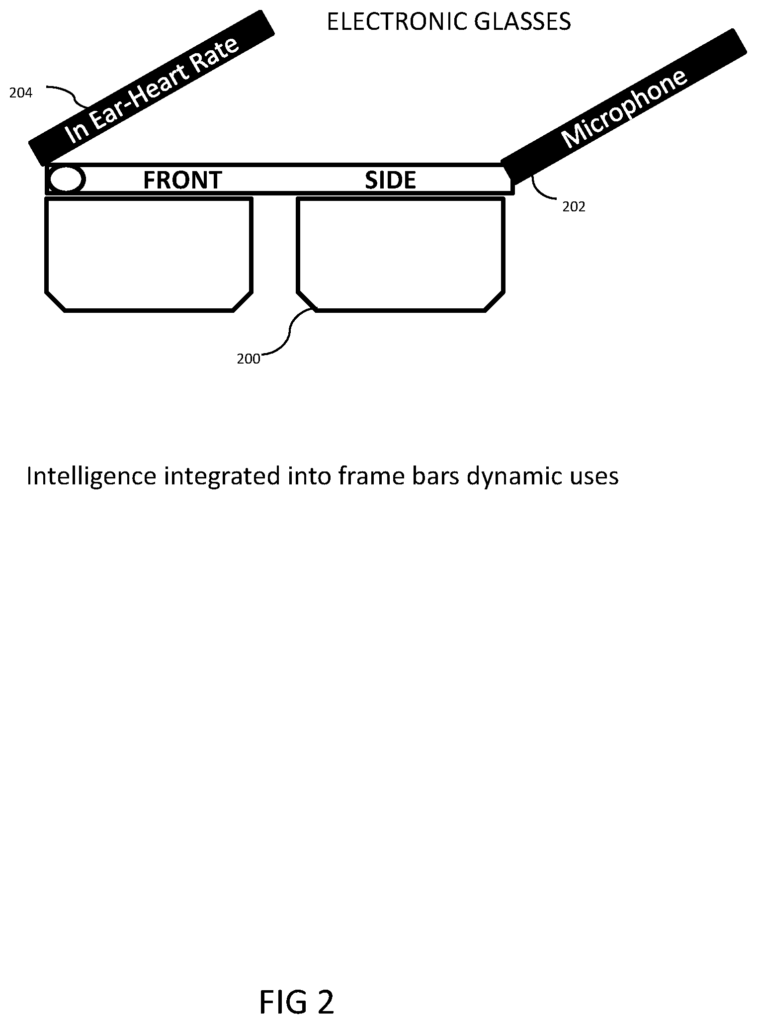
The glasses can take full-motion video or HD video using a camera mounted on the frame of the glasses or integrated into the lenses. The integrated camera model may have the electronics of the camera integrated into the glasses frame, and the lenses of the glasses are used as the camera lens. Images and videos can be wirelessly transmitted to a remote server, or stored locally in the glasses.
In another aspect of the invention the glasses can project text onto a physical object.
The intelligent electronic glasses can also record a person touching an object, classify it in a database, and then link the object to meta-data such as location, time, temperature, proximity of people, and other factors.
In another aspect, intelligent electronic glasses can present an advertisement or product placement in a second lens.
In another aspect, the intelligent electronic glasses could display the entire history of an object. This would include how many times the object has been touched, whether it is still under warranty, the current price on the used market for the item, and the original price.
In another aspect, a user can access a database of all the objects in a room or those that have been loaned to whoever. This information can be displayed by the mobile device, including smart electronic glasses or watches.
Another aspect is that a user can track whether an item has been broken by how many times the object was used. For example, a child who is older may accuse the child of breaking an object. The camera can record the use of a device and store its history, analyze it, and recommend viewing periods for the possible breaking incident.
The glass has two lenses, one for browsing the internet, and the other for displaying images, videos, or text.
The glasses can also be tinted differently to reduce the amount of light that reaches the eyes.
The glasses also have a built-in wireless transmitter and receiver radio for real-time and continuous streaming to a network or local server.
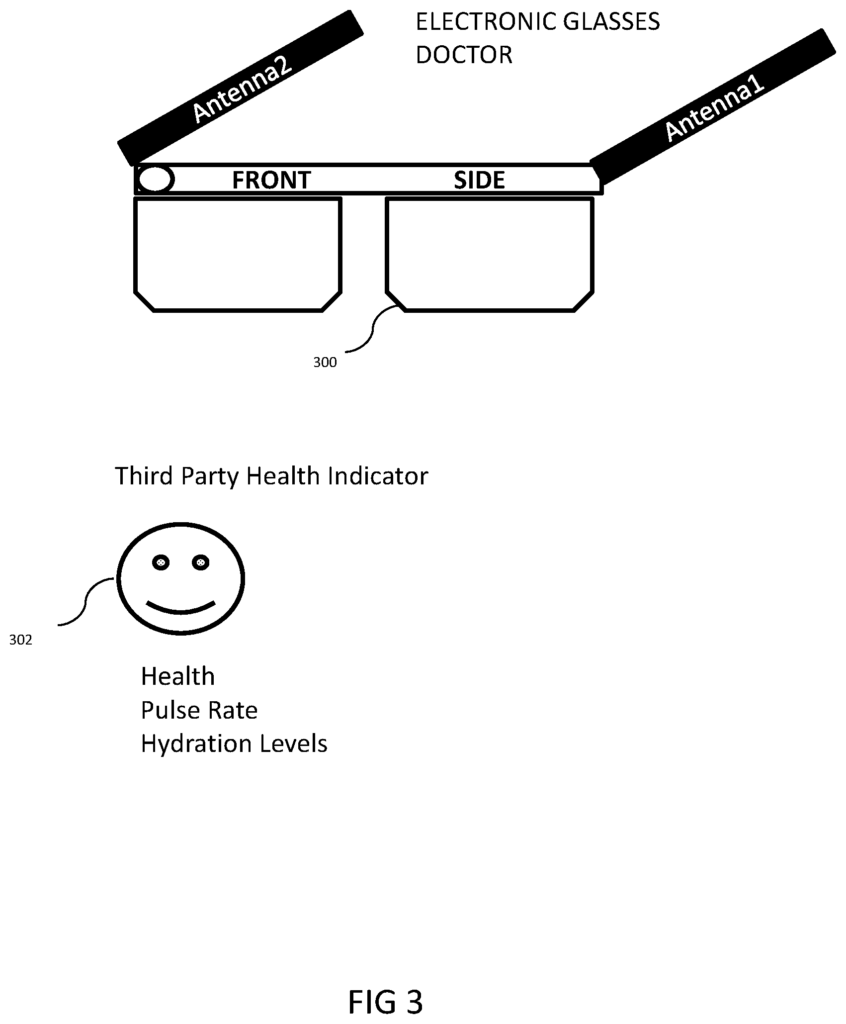
In another aspect, the wireframe may be configured as an antenna for one or multiple wireless radios.
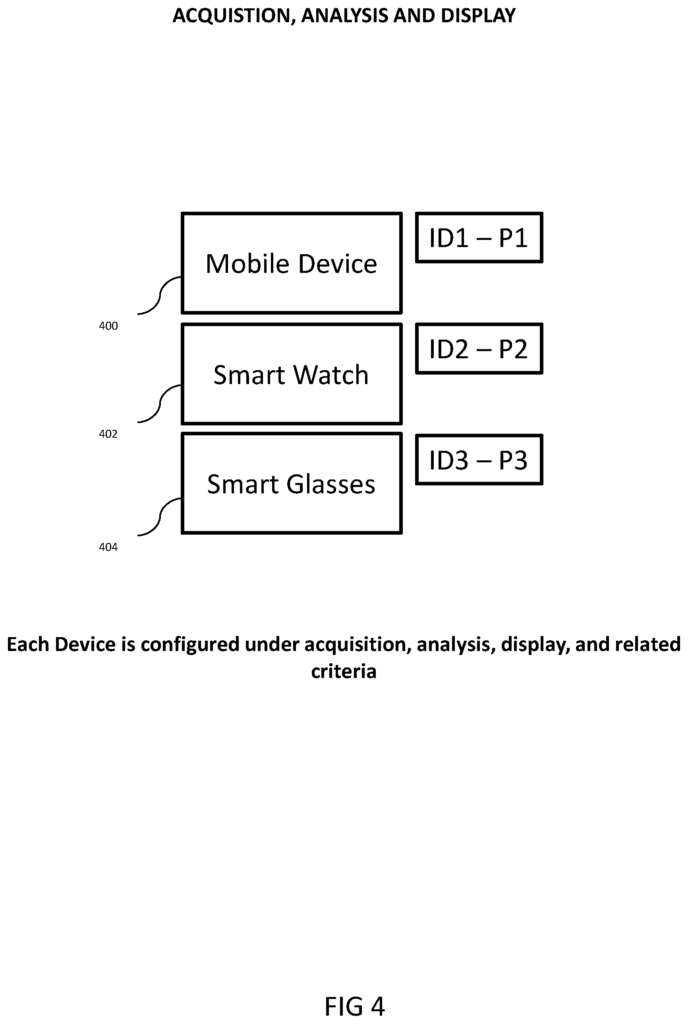
Click here to view the patent on Google Patents.

Leave a Reply